|
Identifying Your Antiques and
Collectibles
by Bob Brooke
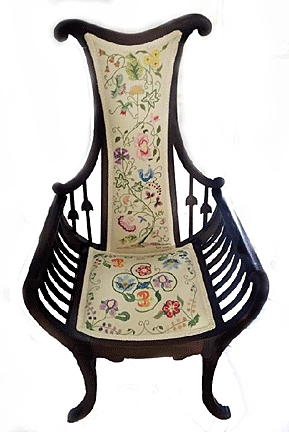 Part
of the fun of collecting antiques is learning about what you collect.
And in today’s data-rich world, there’s a lot of information to be had
if you can find it, that is. The Internet is today’s information
highway, but don’t overlook the traditional information
outlets—libraries and antiques books. Part
of the fun of collecting antiques is learning about what you collect.
And in today’s data-rich world, there’s a lot of information to be had
if you can find it, that is. The Internet is today’s information
highway, but don’t overlook the traditional information
outlets—libraries and antiques books.
There are two questions associated with researching an antique or
collectible—what is it and how much is it worth? It’s almost impossible
to answer the second question without answering the first.
Misidentification of old objects is a major problem. You’ll find lots of
examples at flea markets, antiques malls, antique shops, and auction and
direct sale sites on the Internet. Generally, the misidentification is
not deliberate but the result of a lack of research skills, and/or the
unavailability of research materials.
Identifying the correct collecting category to which an object belongs
is the first of many questions that you must research. You’ll also need
to find out who made the object, how it was made, how it was marketed
and used, why someone saved it, and what it says about the person who
saved it?
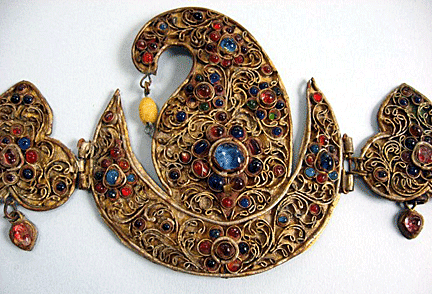 I
receive many Emails from persons who tried to research an older object
on the Internet and failed. Most of them say that the person couldn’t
find any information on their object. And yet, when I search for
information on the same object, I find something. I
receive many Emails from persons who tried to research an older object
on the Internet and failed. Most of them say that the person couldn’t
find any information on their object. And yet, when I search for
information on the same object, I find something.
While it’s true that there’s a wealth of information on the Internet,
there are two other truths as well. First, there’s a wealth of
misinformation on the Internet. Unfortunately, there’s no screening
agency for information offered online. Second, there are tremendous gaps
in that information.
Searching the Internet
The best thing about the Internet is that you can type in a keyword or
two and come up with hundreds of results. This makes things easy—or so
it may seem. Choosing the right keyword is important, but most people
choose the most obvious.
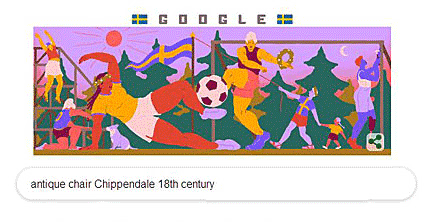
Did you know that the first word you type into the search box is
generally what the search engine searches for first? Let’s say you type
in “antique chair.” The search engine will look for results for
“antique” first, followed by "chair." But if you want to be more
specific, you need to add another word or two. Now type in “antique
chair Chippendale.” For an even more specific search, add the words
"18th century."

The challenge is to ask your question the right way, so that you don’t
end up overwhelmed with too many search results, underwhelmed with too
few, or simply unable to locate the material that you need.
Search engines don’t read sentences the
way people do. Instead, they look for the key words in your query in the
Web sites they search. In other words, you’re not asking a search engine
a question, you’re asking it to look for Web sites where those words
appear in the code. In order to use a search engine or database
effectively, you need to be able to choose the best combination of
keywords.
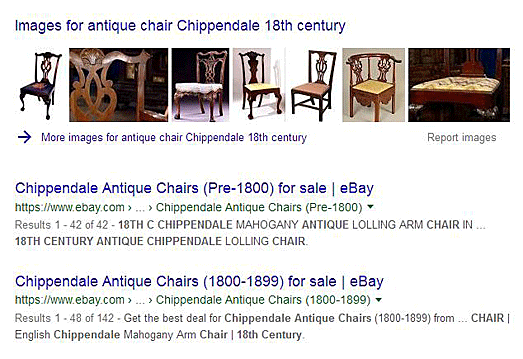
Most search engines work best if you provide them with several keywords.
 Your
most powerful keyword combination is the phrase. Phrases are
combinations of two or more words that must be found in the documents
you’re searching for in the EXACT order shown. To search for a phrase,
enclose it in quotation marks. Your
most powerful keyword combination is the phrase. Phrases are
combinations of two or more words that must be found in the documents
you’re searching for in the EXACT order shown. To search for a phrase,
enclose it in quotation marks.
If you find that you’re getting results that aren’t what you’re looking
for, you can use a minus sign to exclude results that include a certain
word or phrase.
Most search engines have tabs at the top that let you choose between Web
sites, images, videos, news stories, and so on. What most people don’t
realize is that choosing the results of the image search will give them
a variety of photos related to their keywords. Afer you get your image
results, scroll down through them, searching for one or more that looks
similar to your object. Then click on the image. This will bring up a
dialog box that tells you a little about the object. By clicking on the
Web link above the description, you’ll be able to follow it to the Web
site where the image has been posted. This usually leads to information
about the object.
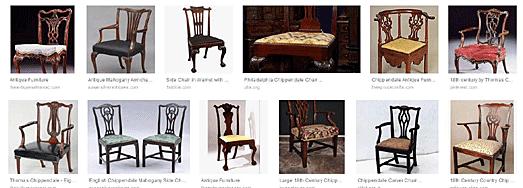
But don’t forget your local libraries. While many of them aren’t keeping
as wide a variety of books as they once did, you’ll find those of
historical societies to be particularly useful. Their book collections
include titles useful in identifying antiques.
<
Back to Antiques Extra! Archives
Next Editorial >
|
